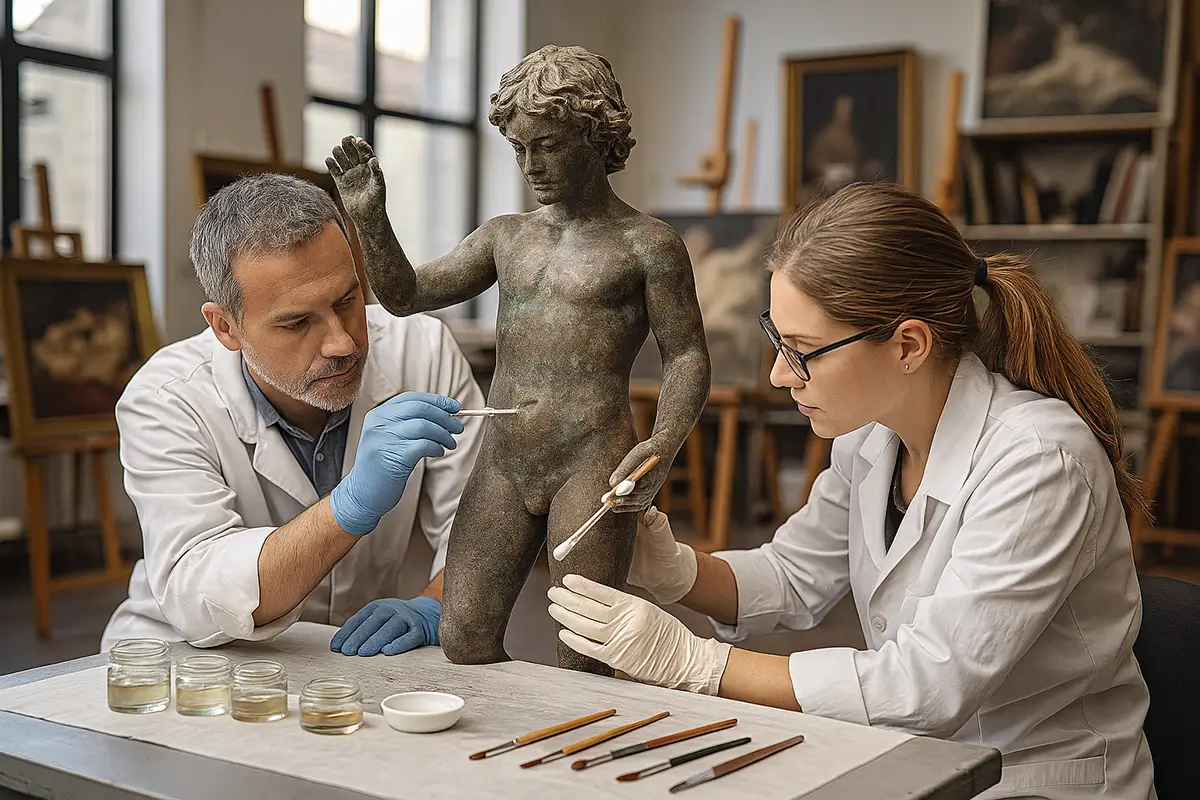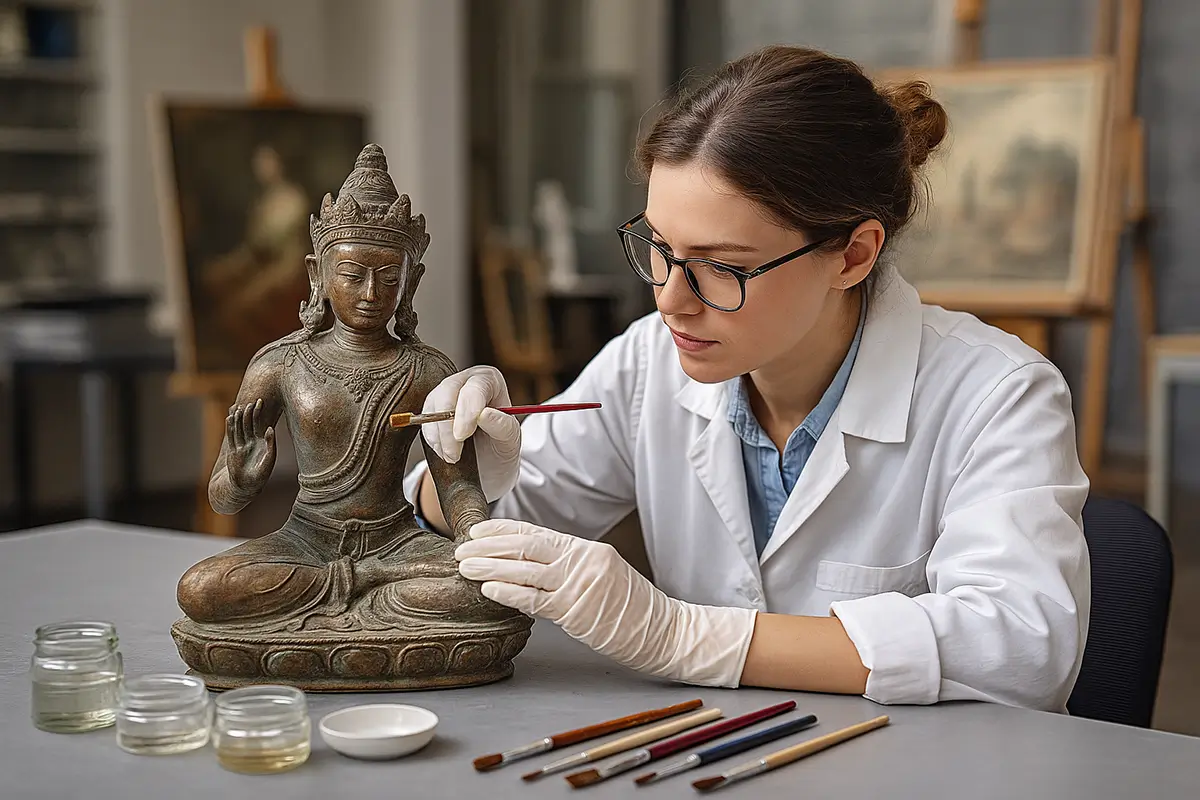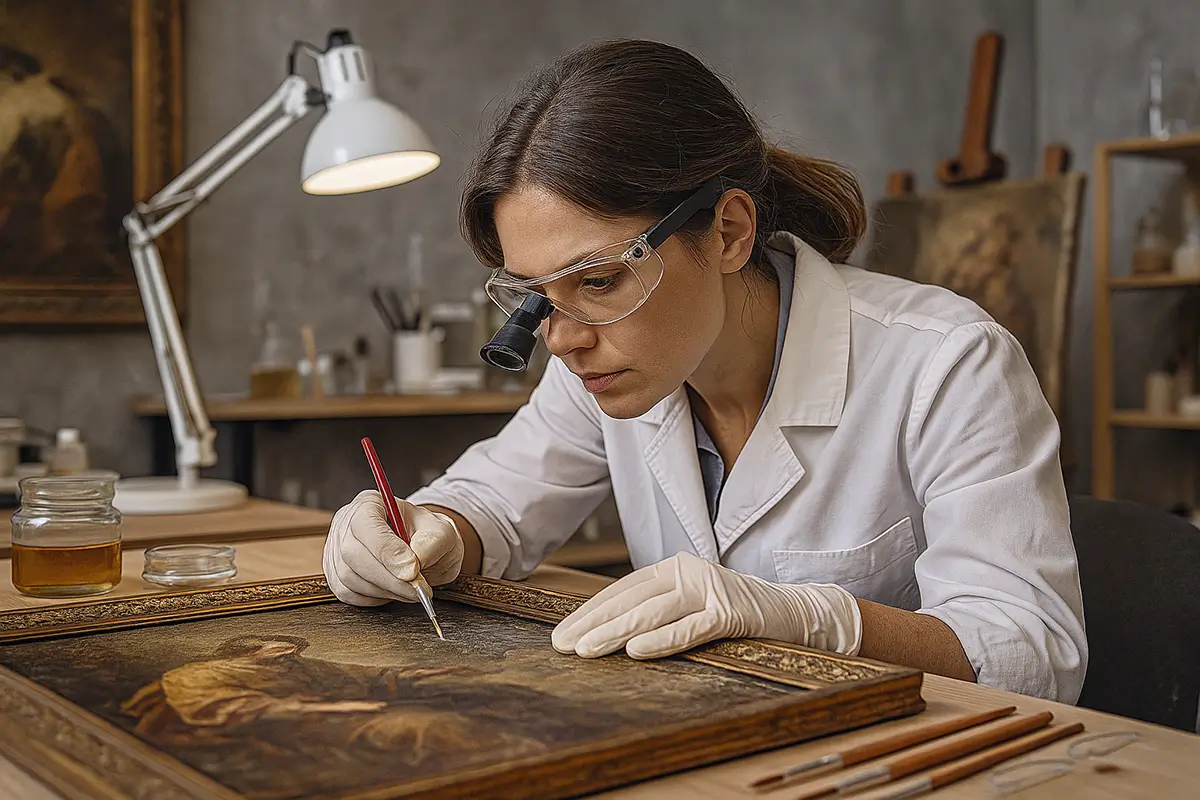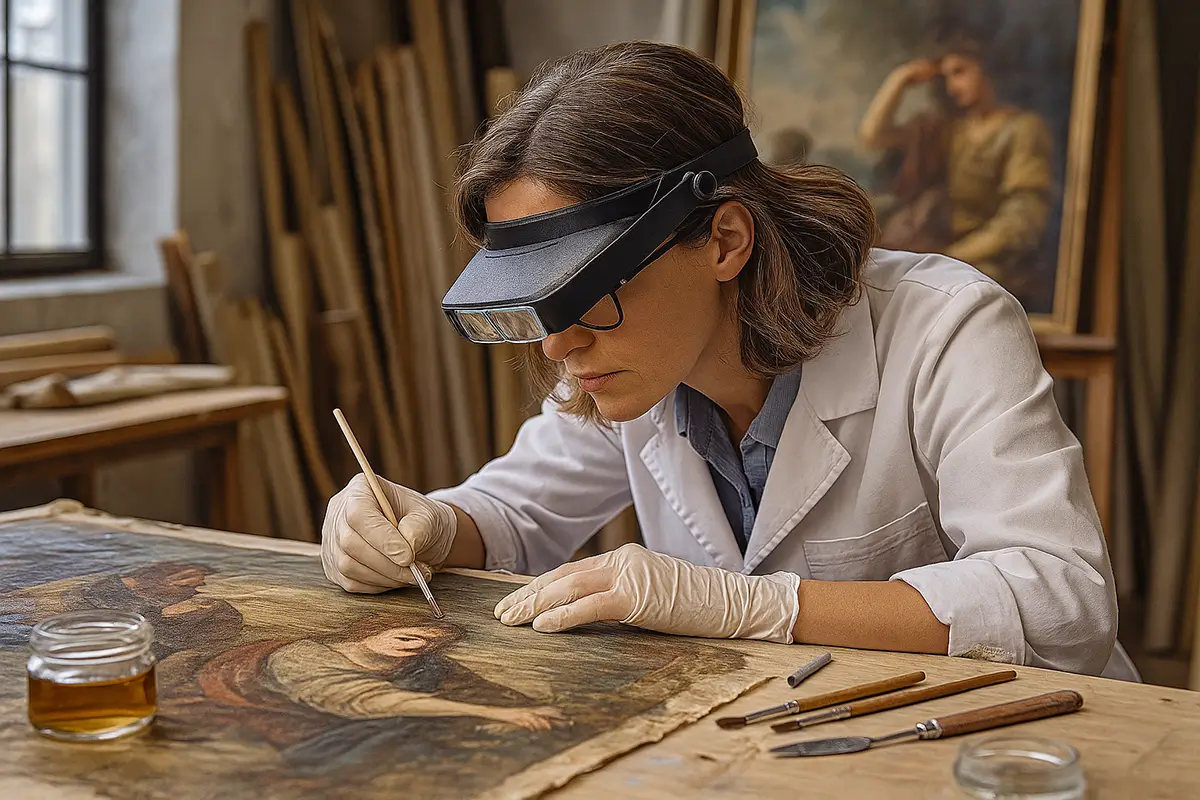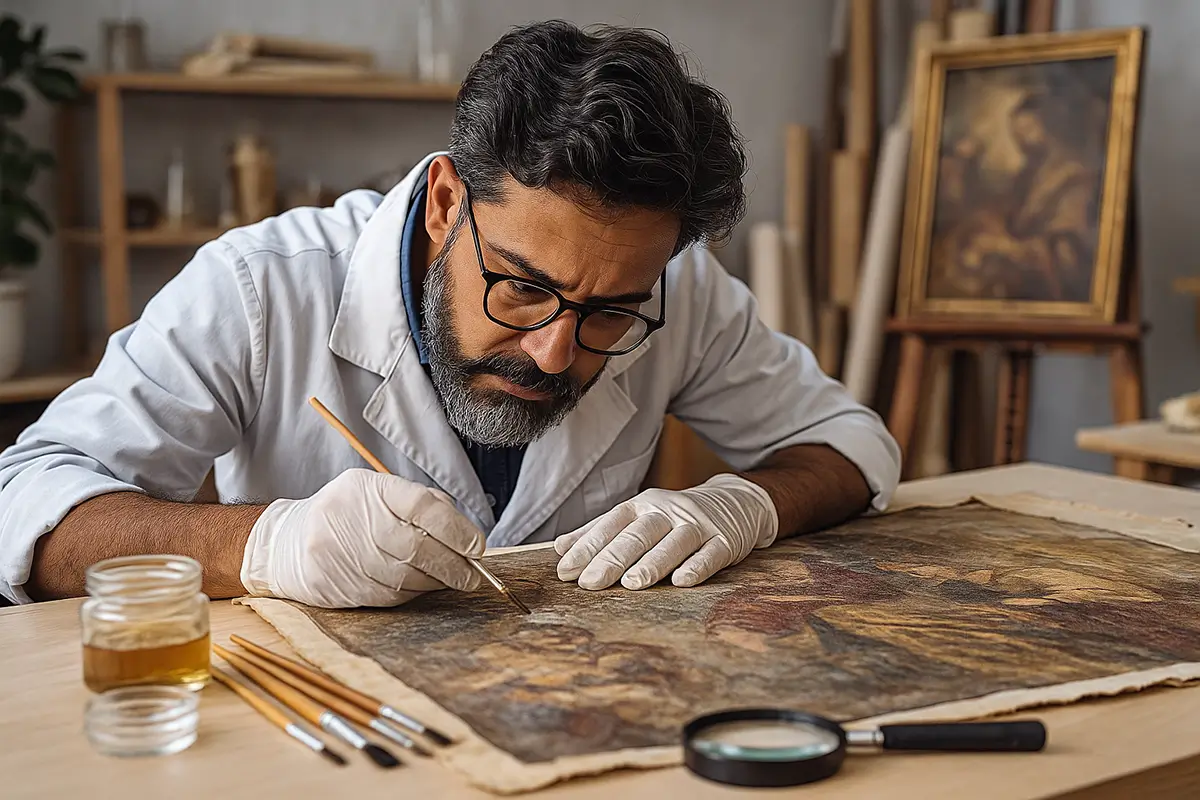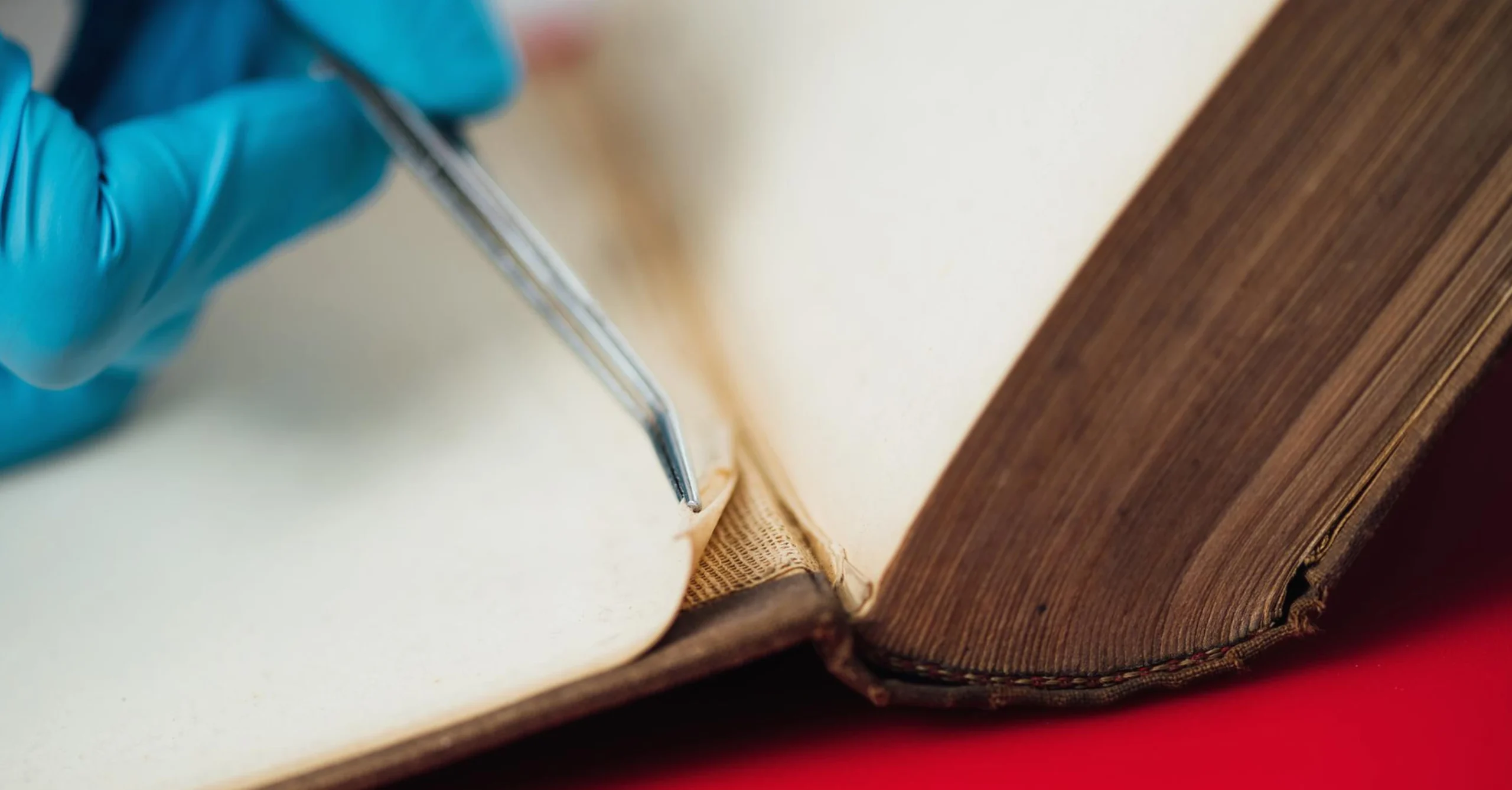Introduction: Learning from the field
The best way to understand the impact of art conservation is through real-world case studies. While theoretical frameworks and best practices provide guidance, it is in the field—working with fragile paintings, textiles, manuscripts, and sculptures—that conservators confront the true challenges of preservation.
India, with its vast artistic heritage and diverse climates, offers lessons unlike any other place. From palace collections exposed to monsoon moisture to corporate archives endangered by pollution, case studies reveal how conservation safeguards both cultural legacy and financial value.
This blog explores case studies of Indian art conservation projects—anonymous in some cases for confidentiality—but rich with lessons for collectors, institutions, and corporates alike.
Why case studies matter in conservation
- Practical insight: Real projects show how theories are applied.
- Problem-solving: Case studies highlight unexpected challenges and solutions.
- Replicable strategies: What works in one case can guide others.
- Evidence of impact: Demonstrates how conservation protects both cultural and financial value.
Case Study 1: Corporate art collection in Mumbai
Context
A large corporate house with a prestigious office in Mumbai had accumulated a collection of modern Indian art. Stored in climate-vulnerable conditions, the works suffered from fungal outbreaks during monsoon season.
Intervention
- Condition assessment identified active mould growth on several canvases.
- Works were treated with fungicidal solutions and stabilised.
- Preventive measures included dehumidifiers and improved storage.
Lessons
- Monsoon climate makes preventive conservation non-negotiable.
- Corporate collections require annual inspections.
- Early intervention prevents loss of both market and cultural value.
Case Study 2: Textile heritage in Jaipur
Context
A palace museum in Rajasthan housed centuries-old royal textiles. Exposure to dust and light had caused fading and insect damage.
Intervention
- Dry surface cleaning with micro-vacuums.
- Stabilisation with support backing fabrics.
- Installation of UV-filtered lighting in display areas.
- Rotation schedule introduced to reduce prolonged exposure.
Lessons
- Textiles demand controlled light and pest management.
- Preventive conservation is as crucial as interventive treatments.
- Heritage textiles are both cultural icons and fragile assets requiring sustained care.
Case Study 3: Religious manuscripts in Varanasi
Context
An ancient temple library stored palm-leaf manuscripts. Humidity and improper storage accelerated deterioration.
Intervention
- Pages cleaned and stabilised.
- Acid-free archival enclosures introduced.
- Manuscripts digitised to reduce physical handling.
Lessons
- Religious institutions often lack technical infrastructure, but partnerships with professionals safeguard treasures.
- Digitisation complements conservation by reducing wear.
- Archival storage materials are essential for paper and palm-leaf artefacts.
Case Study 4: Bronze sculpture in Tamil Nadu
Context
A centuries-old Chola bronze in a regional museum showed green corrosion due to chemical reactions with moisture.
Intervention
- Corrosion reduced through electrolytic stabilisation.
- Protective coatings applied to surface.
- Microclimate monitoring introduced.
Lessons
- Metal artefacts require chemistry-driven conservation.
- Stabilisation prevents ongoing loss without altering authenticity.
- Museums must adopt environmental monitoring tools.
Case Study 5: Contemporary mixed media installation in Mumbai
Context
A corporate collector commissioned a contemporary installation using synthetic materials. Within five years, plastics discoloured and adhesives began failing.
Intervention
- Condition analysis identified unstable synthetic compounds.
- Reinforcement used stable materials as discreet substitutes.
- Environmental adjustments reduced further chemical breakdown.
Lessons
- Contemporary art poses new challenges—non-traditional materials deteriorate unpredictably.
- Conservation requires constant innovation and adaptability.
- Collectors of contemporary works should budget for periodic conservation.
Case Study 6: Photographic archives in Kolkata
Context
A private collector held thousands of black-and-white photographs documenting colonial-era India. Many had yellowed and silvered.
Intervention
- Surface cleaning and digitisation for access.
- Stabilisation in acid-free sleeves.
- Climate-controlled storage installed.
Lessons
- Photographs require urgent care due to fragile chemistry.
- Digital copies preserve access while originals are stabilised.
- Archival materials are vital for photographic collections.
Overarching lessons from Indian conservation projects
1. Climate is a constant challenge
Heat, humidity, monsoon rains, and pollution create risks across India. Conservation strategies must be adapted to regional conditions.
2. Preventive measures save money
Most damages could have been avoided with basic preventive conservation—archival storage, controlled lighting, or humidity monitoring.
3. Documentation is essential
Every conservation treatment must be recorded. This builds a transparent history that adds value to collections.
4. Corporate collections need attention
As corporates invest in art, they must recognise their role as custodians, not just owners. Professional conservation elevates credibility.
5. Contemporary art requires innovation
Synthetic materials in modern art degrade differently. Conservators must combine scientific testing with flexible solutions.
The role of professional conservation services
Across all case studies, the common thread is the importance of professional expertise.
DIY fixes or untrained repairs often worsen damage. Trained conservators bring:
- Scientific knowledge of materials.
- Ethical frameworks to ensure authenticity.
- Specialised tools for fragile interventions.
- Holistic solutions that combine treatment with preventive strategies.
At TurmericEarth, we integrate science, ethics, and cultural sensitivity to deliver end-to-end solutions—preserving artworks across media and contexts.
Future directions: Scaling conservation in India
- Expansion of labs in urban centres.
- Public-private partnerships to preserve heritage.
- Integration of digitisation as a parallel conservation strategy.
- Education and training to build new generations of conservators.
As demand for conservation grows, India is moving towards global best practices, combining traditional craft knowledge with cutting-edge technologies.
Conclusion: Lessons that endure
Art conservation in India is more than technical intervention—it is a dialogue between past and present. Each project teaches us that timely care, preventive measures, and professional expertise make the difference between survival and loss.
For collectors, corporates, and institutions, these lessons are actionable: invest in preventive care, document treatments, and partner with professionals. The result is not only the preservation of heritage but also the protection of financial and cultural value.
Partner with us through our Art Conservation Services. At TurmericEarth, we bring lessons from the field to every project, ensuring that fragile artworks endure as living legacies for future generations.



